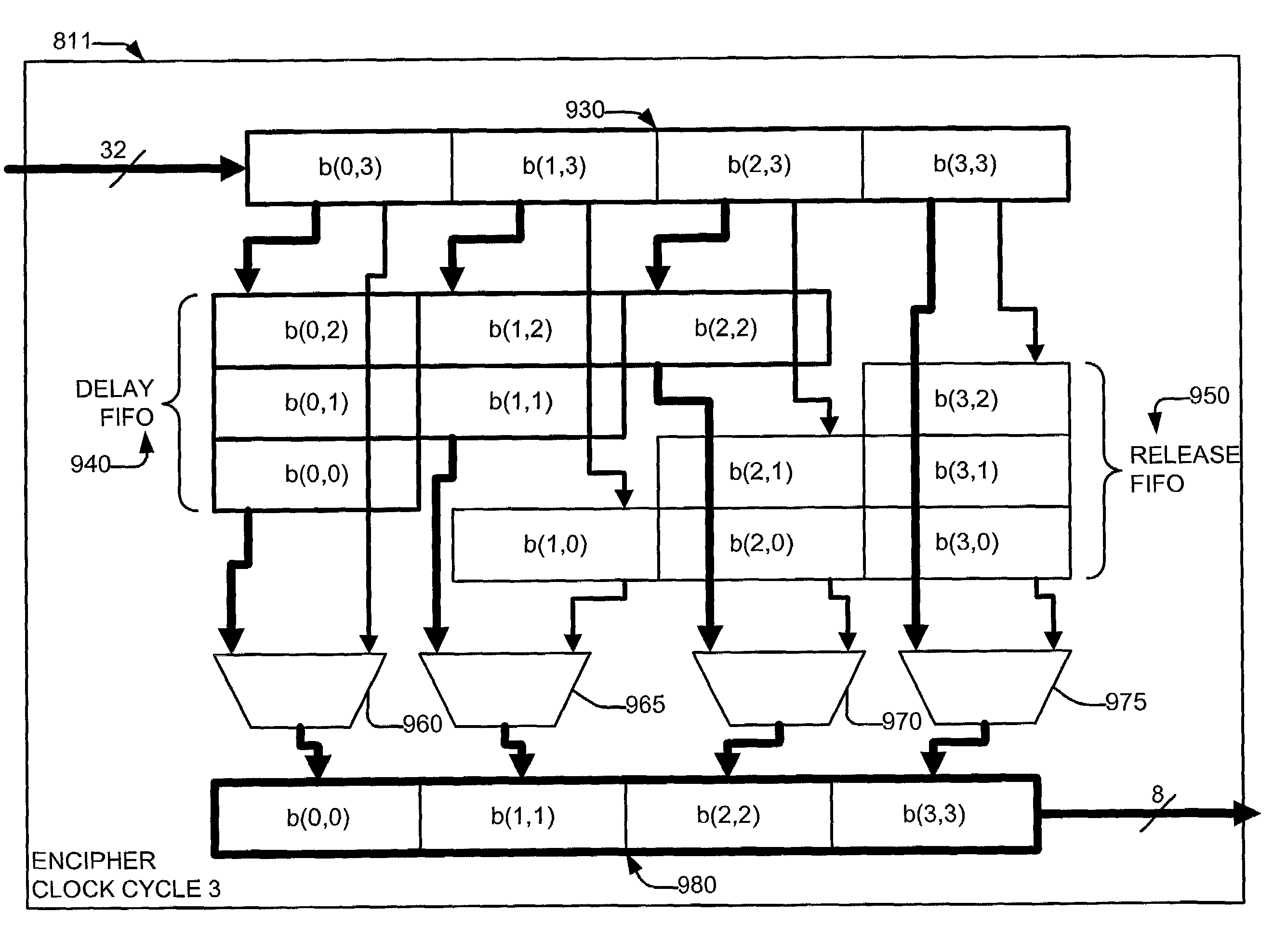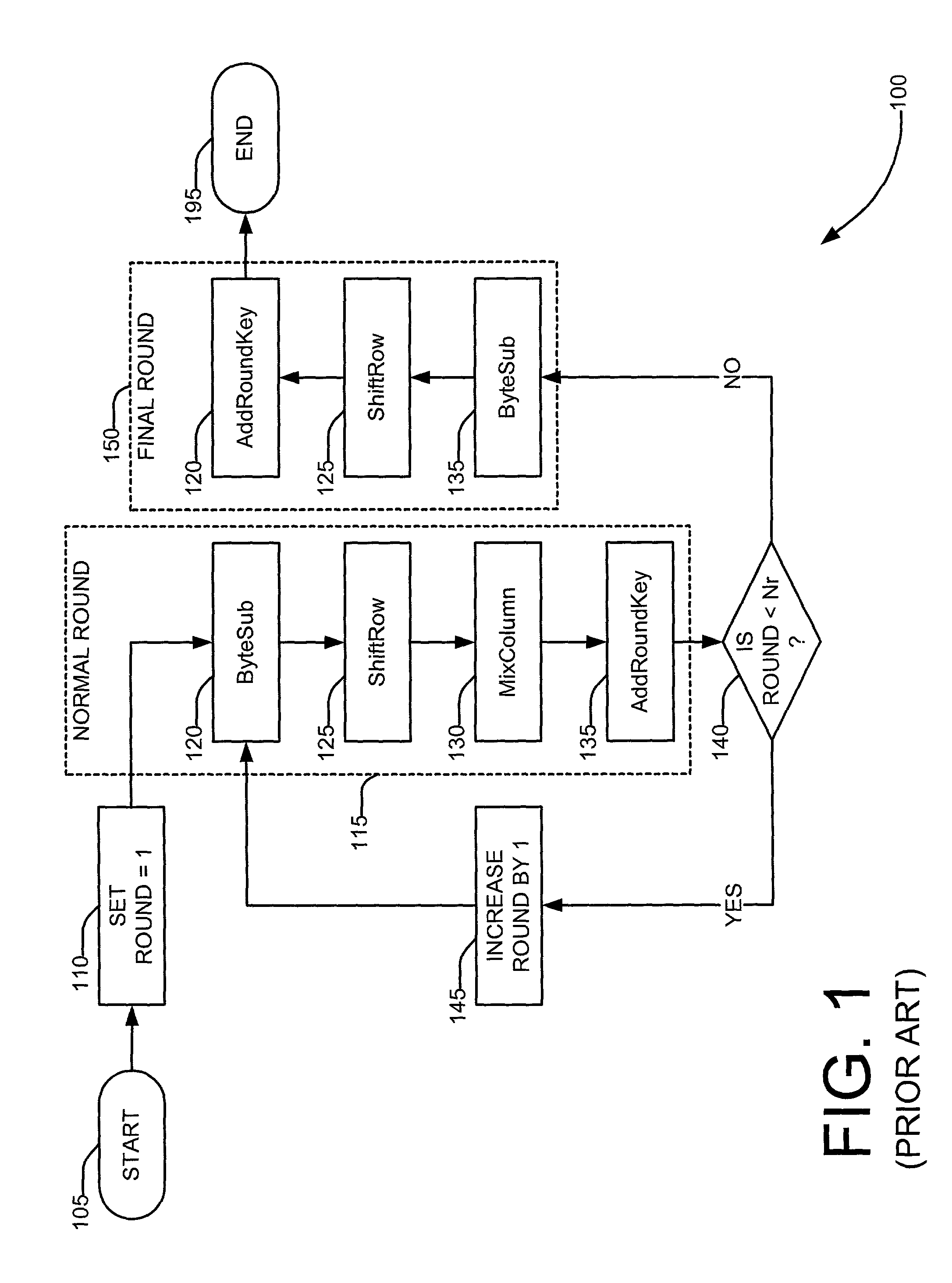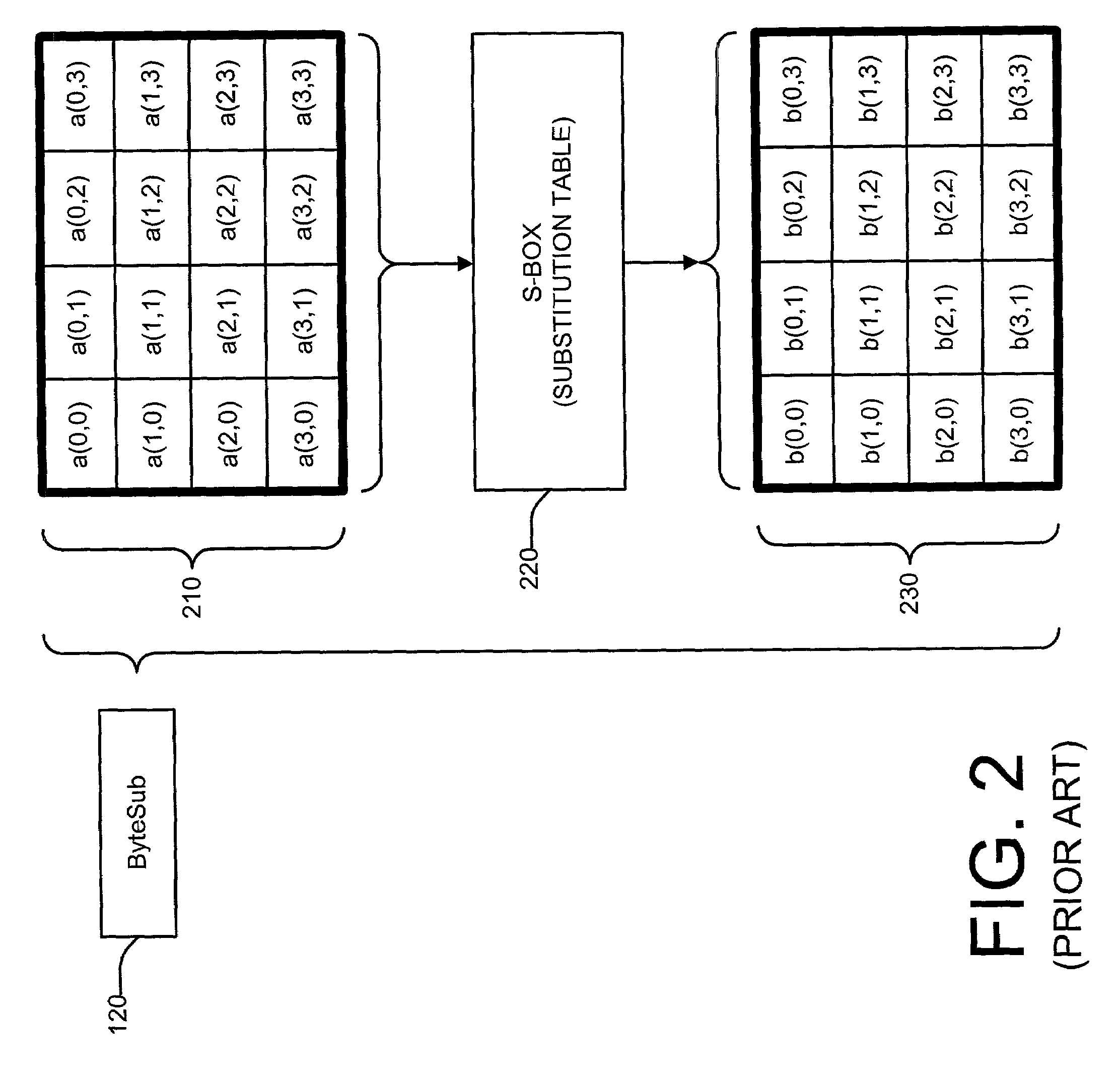System and method for executing Advanced Encryption Standard (AES) algorithm
a technology of advanced encryption and algorithm, applied in the field of encryption technology, can solve the problems of inefficiency of this system, potential bottleneck in memory access and byte manipulation, and the need to improve cipher performan
- Summary
- Abstract
- Description
- Claims
- Application Information
AI Technical Summary
Benefits of technology
Problems solved by technology
Method used
Image
Examples
Embodiment Construction
[0046]FIGS. 7A, 7B, and 7C depict block diagrams showing an example hardware configuration of the system of the invention having an optimized cipher subprocessor 700, 1100, 1200. As shown in FIGS. 7A, 7B, and 7C, data 602 and a key 618 may be input to a control unit 601 by way of 32-bit interfaces. The data 602 may be stored in a 128-bit input register 604, which, in subsequent rounds of the AES algorithm, may be used to store intermediate states or intermediate cipher texts. For convenience, the initial plain text and the intermediate cipher text will be referred to herein as “intermediate states,”“state data,” or simply “states.” The state, which is stored in the 128-bit input register 604, may be input to an optimized cipher subprocessor (or cipher core or cipher subsystem) 700, 1100, 1200 via 32-bit data buses 613 in a sequential manner. The encryption (or decryption) process takes place simultaneously as the states are being loaded into the optimized cipher subprocessor 700, 11...
PUM
 Login to View More
Login to View More Abstract
Description
Claims
Application Information
 Login to View More
Login to View More - R&D
- Intellectual Property
- Life Sciences
- Materials
- Tech Scout
- Unparalleled Data Quality
- Higher Quality Content
- 60% Fewer Hallucinations
Browse by: Latest US Patents, China's latest patents, Technical Efficacy Thesaurus, Application Domain, Technology Topic, Popular Technical Reports.
© 2025 PatSnap. All rights reserved.Legal|Privacy policy|Modern Slavery Act Transparency Statement|Sitemap|About US| Contact US: help@patsnap.com



